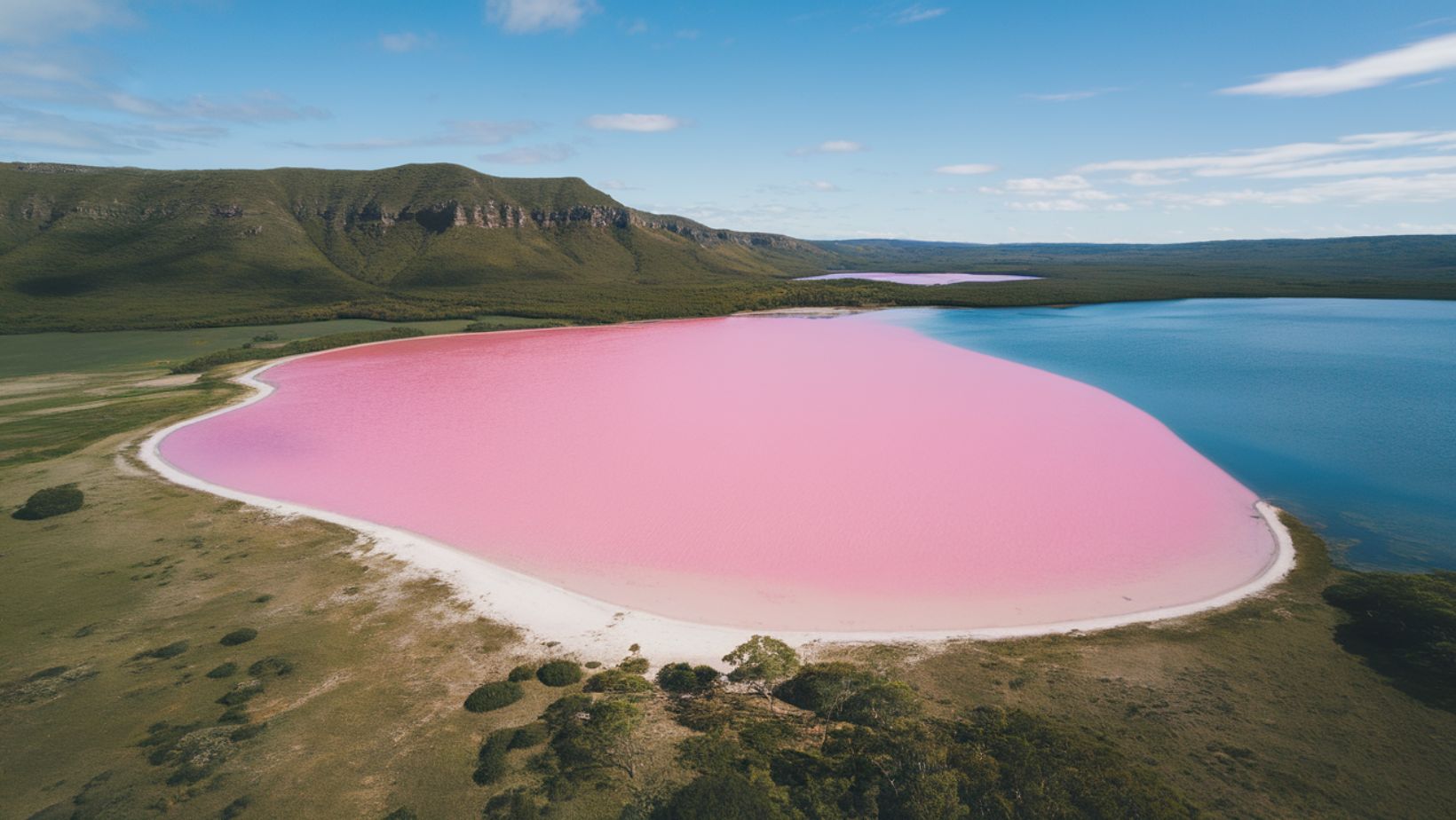Have you ever imagined swimming in a lake that looks like a giant pool of pink lemonade? What if nature could create something so visually stunning that it seems almost artificial? Deep in Western Australia lies a natural phenomenon that challenges our perception of reality – Lake Hillier, a vibrant pink lake that has captivated scientists and travelers alike. But what makes this rosy wonder so special, and why does it maintain its striking bubblegum hue throughout the year?
A Natural Pink Paradise That Defies Scientific Explanation Sits on Middle Island
Located on Middle Island, off the coast of Western Australia, Lake Hillier stretches about 600 meters long and is surrounded by a rim of white salt crystals and dense eucalyptus forest. According to recent scientific studies, the lake’s distinctive pink color comes from a unique combination of microorganisms, including Dunaliella salina algae and pink bacteria called halobacteria. These organisms produce beta-carotene, the same pigment found in carrots, giving the lake its iconic rosy tint that remains constant regardless of temperature or weather conditions.
Aerial Views Offer the Most Spectacular Way to Experience This Pink Wonder
While ground access to Lake Hillier is restricted, scenic flights from Esperance provide breathtaking aerial views that showcase the stark contrast between the pink lake and the deep blue Southern Ocean. Local tour operators report that approximately 7,000 visitors take these scenic flights annually, with prices starting from $385 per person for a two-hour experience. The most popular viewing times are between 10 AM and 2 PM when the sun’s position maximizes the visual impact of the pink hue.
Modern Technology Has Made This Hidden Gem More Accessible Than Ever Before
Thanks to drone photography and social media, Lake Hillier has experienced a surge in popularity, with Instagram posts featuring the lake increasing by 300% since 2018. Tour operators have adapted to this growing interest by offering specialized photography flights that allow for optimal image capture. Several travel photographers have noted that the lake appears most vibrant during December through February, when Australia’s summer provides perfect lighting conditions.
The Lakes Unique Ecosystem Supports a Thriving Microscopic Community
Despite its extreme salinity – ten times saltier than the ocean – Lake Hillier hosts a complex ecosystem. Recent research expeditions have identified over 30 different species of microorganisms living in its waters. Environmental scientists monitor the lake’s condition regularly, ensuring its preservation for future generations. The surrounding area has been designated as a research site, with strict guidelines in place to protect this natural wonder.
Responsible Tourism Practices Help Preserve This Natural Wonder for Future Generations
Conservation efforts have established clear guidelines for visitors and tour operators. A strict “no-landing” policy on Middle Island helps protect the delicate ecosystem, while designated viewing zones ensure minimal environmental impact. Local authorities have implemented a sustainable tourism framework that limits daily visitor numbers while still allowing people to experience this remarkable natural phenomenon. Tour operators must obtain special permits and follow specific flight paths to minimize disruption to local wildlife.
